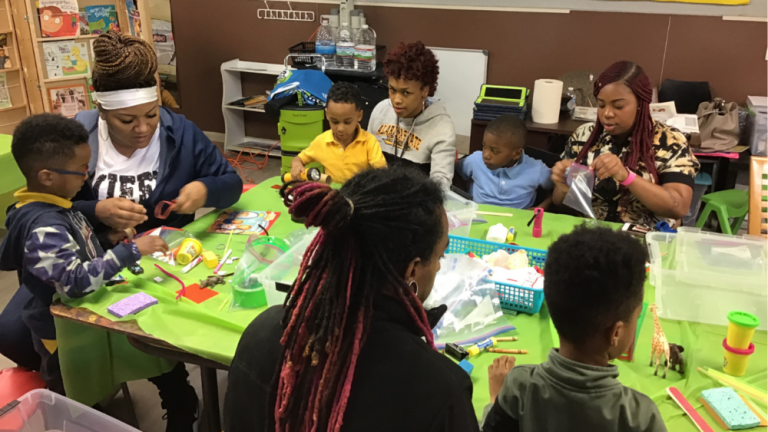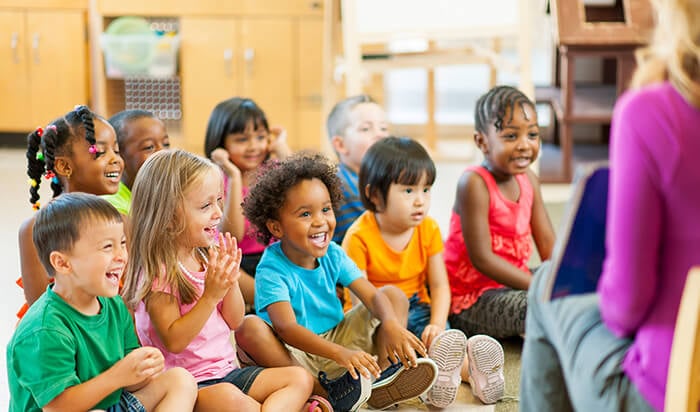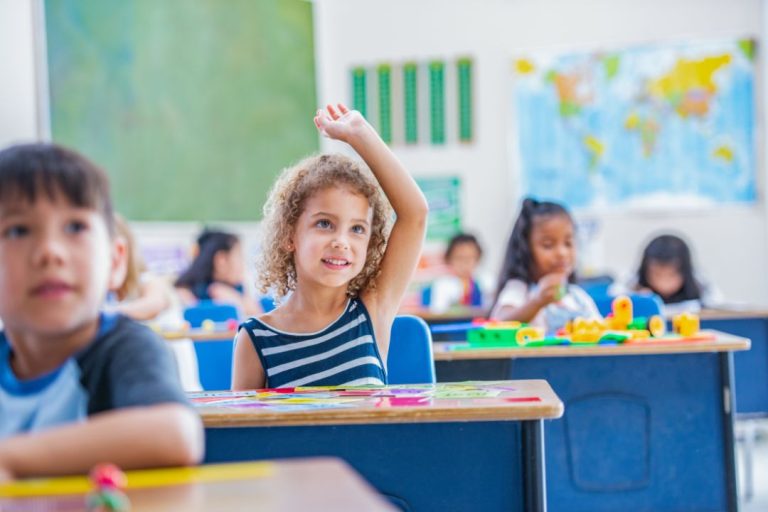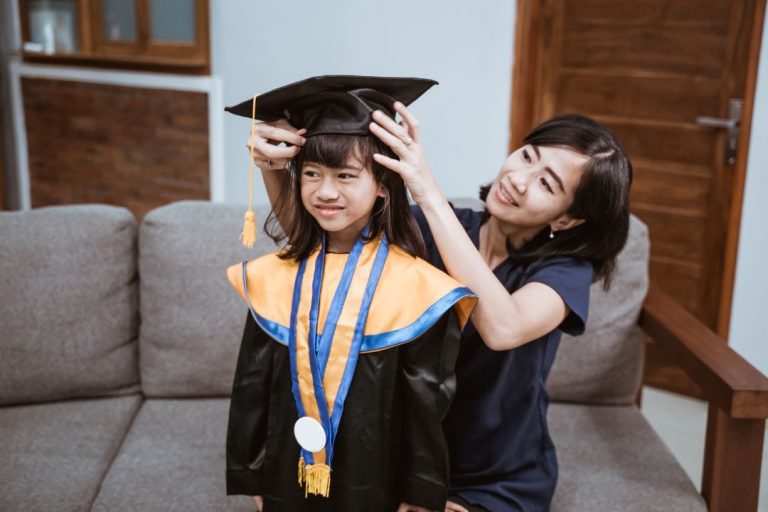Multicultural Lesson Plans for Preschool: Global Tots
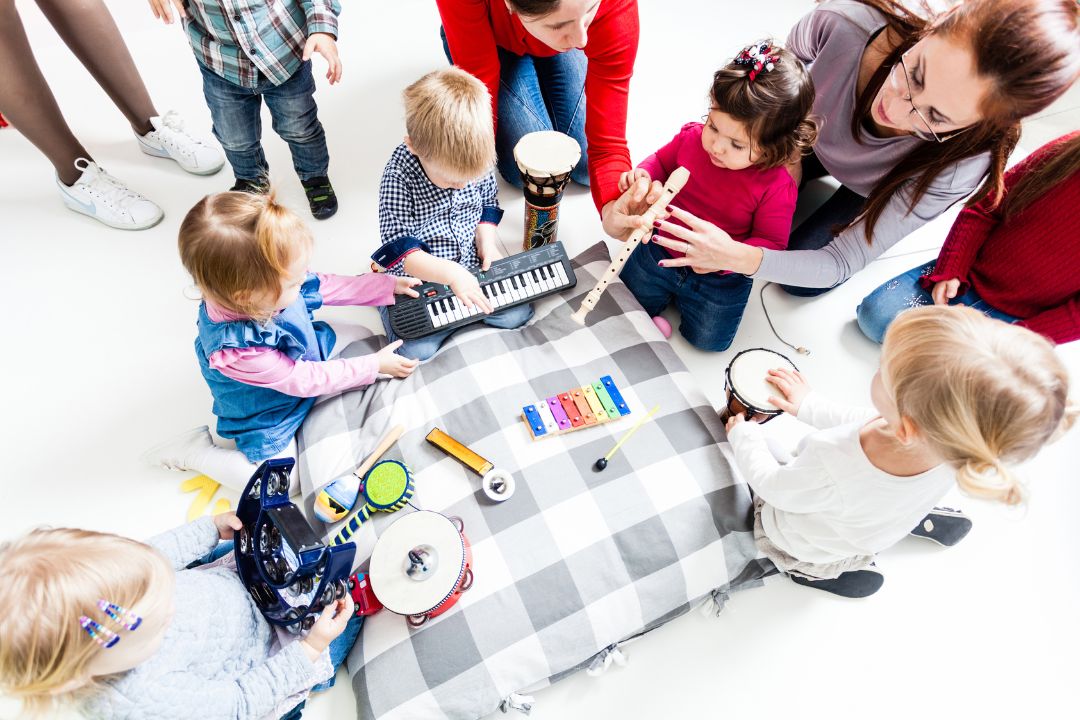
Multicultural lesson plans for preschool foster inclusivity and global awareness. They celebrate diversity through engaging, age-appropriate activities.
Crafting multicultural lesson plans for preschool nurtures young minds towards embracing diversity and cultural awareness. Through carefully designed activities such as storytelling, music, crafts, and games from around the world, children learn to appreciate and understand different cultures early in life.
These interactive and educational plans are essential in creating a foundation for social harmony and respect among the next generation. They also prepare children to navigate and succeed in an increasingly globalized society. Educators and caregivers seeking to introduce such essential concepts to their students can find a variety of resources and activities tailored for the impressionable preschool years, focusing on the richness of our world’s cultural tapestry.
Embracing Cultural Diversity In Preschool
Embracing Cultural Diversity in Preschool is more than just a progressive educational trend. It’s a reflection of our global society that teaches young learners the values of inclusivity and respect. This section of our blog post dives into how introducing multicultural lesson plans can reshape the educational journey in preschool, preparing our youngest members of society for a diverse world.
Understanding The Impact On Young Minds
The first years of a child’s life are crucial for cognitive, emotional, and social development. When preschoolers are exposed to multiple cultures, languages, and traditions, it:
- Enhances cognitive development through the introduction of diverse perspectives and problem-solving approaches.
- Builds empathy as children learn about and understand people from different backgrounds.
- Encourages acceptance and inclusivity, setting the stage for healthier social interactions in the broader world.
Importance Of Starting Multicultural Education Early
Introducing children to multiculturalism at a young age provides a foundation for lifelong respect and understanding. It:
- Reduces prejudice by normalizing diversity as a part of everyday life.
- Prepares children for a globalized future, fostering curiosity and appreciation for different cultures.
- Helps to defeat stereotypes before they can take root, shaping kinder, more aware individuals.
A Snapshot Of Changing Demographics In Classrooms
Today’s classrooms are a vibrant tapestry of ethnicities, languages, and cultures. The demographics are a testament to an evolving society:
| Year | Diversity Rate | Notable Changes |
|---|---|---|
| 2000 | 30% | Mild increase in bilingual students |
| 2010 | 45% | Growth in multicultural learning materials |
| 2020 | 60% | Significant diversity in student backgrounds |
This change necessitates a curriculum that is reflective of and responsive to the students it serves, ensuring that each child feels represented and valued.
Multicultural Lesson Plans For Preschool
The vibrant mosaic of cultures within our classrooms presents a unique opportunity for educators to cultivate an environment of understanding and appreciation among young learners. Multicultural lessons plans for preschool are essential in laying the foundational stones of diversity and inclusivity from an early age. These plans are not just about celebrating various cultural festivals but encompass a holistic approach to integrating global awareness into every aspect of early childhood education.
The Role Of Global Tots In Early Education
Within the context of multicultural education, the term ‘Global Tots’ describes a new generation of children being raised as world citizens. It is essential to recognize the significance of nurturing global awareness among preschoolers. By exposing young minds to various cultures and languages, educators encourage empathy, curiosity, and a broadened worldview.
- Cultural Exposure: Engaging with stories, music, and art from around the world.
- Language Skills: Introduction to basic phrases or songs in different languages enhances linguistic abilities.
- Social Understanding: Interacting with diverse communities nurtures social skills and reduces biases.
Structuring Inclusive And Diverse Lessons
To create an inclusive classroom environment, lessons should reflect the vast array of cultures and backgrounds each child brings to the table. Structuring lessons that embrace this diversity involves:
- Identifying and integrating cultural holidays, traditions, and customs into the curriculum.
- Using multicultural books, toys, and teaching materials that represent a range of ethnicities and family structures.
- Planning activities that encourage children to share their own experiences and learn from others.
| Activity | Description | Learning Outcome |
|---|---|---|
| World Map Exploration | Children locate countries and discuss the different cultures and landmarks. | Geographical awareness and cultural literacy. |
| Cooking Together | Preparing simple dishes from around the world. | Culinary skills and understanding of international cuisines. |
| Folktales Storytelling | Reading and performing folktales from various cultures. | Creative expression and moral reasoning through diverse narratives. |
By incorporating these strategies into the preschool curriculum, educators can create a rich, well-rounded educational experience that honors and celebrates the wealth of diversity in our world.
Crafting Engaging Cultural Activities
When crafting engaging cultural activities for preschoolers, the focus is on colorful, hands-on learning experiences that celebrate diversity. These activities are more than just fun; they foster an early appreciation for the wide range of cultures that make up our world. By integrating these lessons into the day-to-day curriculum, educators can provide young learners with a global perspective that paves the way for inclusivity and understanding. Let’s dive into some dynamic ways to bring the beauty of various cultures into the preschool classroom.
Celebrating International Festivals And Holidays
Young minds are captivated by festivities, making international festivals and holidays a perfect framework for diverse lesson plans. Teachers can create a calendar of global celebrations throughout the year and plan activities that align with these significant occasions. Here are some ideas to get started:
- Lunar New Year: Craft dragon puppets and practice traditional parades.
- Día de los Muertos: Make vibrant paper marigold flowers and explore the meaning behind the day.
- Diwali: Illuminate the classroom with DIY clay lamps and colorful rangoli designs.
Exploring World Cuisines In Snack Time
Integrating world cuisines into snack time is a delicious way to introduce young learners to different cultures. Engage their senses with an exploration of tastes, textures, and smells that represent the diversity of the culinary world. For an organized and educational experience, consider the following:
| Country | Snack | Key Ingredients |
|---|---|---|
| Mexico | Guacamole | Avocado, Lime, Tomato |
| Italy | Caprese Skewers | Mozzarella, Tomato, Basil |
| Japan | Rice Balls | Rice, Nori, Salt |
Music And Dance From Around The Globe
Music and dance are universal languages that can instantly connect children to different parts of the world. Preschool teachers can curate a playlist of traditional tunes and pair them with simple dance moves from the corresponding culture. This activity not only helps with physical development but also with rhythmic awareness and cultural exposure. Activities to consider for your music and dance curriculum include:
- Learning the Samba with lively Brazilian beats.
- Swirling to the sounds of an Irish jig.
- Stepping to the rhythm of African drum beats.
Stories Around The World At Circle Time
Circle time in preschool is a golden opportunity to transport little learners to different corners of the globe, all from the comfort of their classroom. Integrating multicultural lesson plans into this time can fuel their curiosity about different cultures and build a foundation for global awareness. Let’s explore engaging ways to weave universal tales into this special time of day, one story at a time.
Using Books To Travel The World
Opening a book is like boarding a plane for young minds, offering an instant ticket to the vast expanses of the world. Here’s how you can transform circle time into a journey across cultures through literature:
- Select books with global themes that celebrate diversity and impart lessons on empathy and acceptance.
- Include vibrant picture books that bring stories to life with illustrations depicting landscapes and characters from around the world.
- Curate a multicultural library corner where children can pick books and explore different countries, languages, and traditions at their own pace.
By strategically choosing literature that represents a tapestry of cultures, educators inspire young learners to become global citizens, all while tapping into the magical world of reading.
Culturally Diverse Storytelling Techniques
As you delve into stories from various regions, incorporate diverse storytelling techniques to enhance the experience:
- Puppets and Props: Use culturally representative puppets or make storytelling props that resonate with the story’s origins, allowing children to visually connect with the narrative.
- Music and Rhythm: Introduce music or rhythm associated with the story’s culture, enhancing the atmosphere and mood during the storytelling session.
- Role-Playing Activities: Engage children in role-playing, inviting them to act out scenes from the story while exploring cultural nuances and dialects.
These methods not only make storytime more interactive and memorable but also encourage children to respect and celebrate the uniqueness of every culture.
By using captivating books and innovative storytelling techniques, preschool circle time can become an immersive cultural experience. Young learners gain insights into different lifestyles and traditions, fostering a sense of understanding that bridges cultural divides, all while nestled in their own cozy circle.
Global Art Projects For Little Hands
Introducing multicultural lesson plans to preschoolers offers a creative approach to teach about the rich tapestry of world cultures. One of the most engaging ways to explore this diversity is through global art projects tailored for little hands. These projects not only foster an appreciation for various cultural art forms but also enhance fine motor skills and spark imagination among young learners.
Crafts That Introduce Global Art Traditions
Embarking on a journey through global art begins with crafts that are both fun and educational. Preschool children can engage with different cultures through hands-on activities that bring traditional art forms to life. Here are some project ideas:
- African Mask Making: Learners can create colorful masks using paper plates and vibrant paint that mimic traditional African ceremonial masks, connecting them to the continent’s deep-rooted artistic heritage.
- Japanese Origami: Folding paper to create Origami figures introduces the delicate art of paper folding from Japan, helping children improve their dexterity while learning about geometric shapes and symmetry.
- Australian Aboriginal Dot Painting: Kids can use cotton swabs or their fingertips to dot paint, a technique adapted from Aboriginal art to narrate important cultural stories.
Providing a brief background on the origin of each craft enhances the learning experience and ensures that children gain respect for the cultures they’re exploring.
Integrating Cultural History In Art Lessons
Art is a powerful storytelling medium. When integrated with cultural history, art lessons become a multidimensional educational tool. Here is how educators can weave cultural tales into the art projects:
- Storybook Inspiration: Begin with a story or fable from a specific culture. Use it as a springboard for the art project, encouraging children to visualize and create art based on the narrative.
- Cultural Symbols: Include symbols that are significant to the tradition being learned. Whether it’s the colors of a country’s flag or a significant animal, these symbols can be incorporated into art projects, offering deeper understanding.
- Historical Figures: Portraying historical figures in art can provide an anchor to the past. Children might create a portrait of an influential artist or leader, building a connection between the individual’s contributions and their cultural impact.
Connecting art projects with the stories and histories of different cultures not only builds global awareness in preschoolers but also instills an early appreciation for the diverse world they are a part of.
By integrating these multicultural art activities into lesson plans, educators can offer a rich, diverse curriculum that equips little learners with a broad worldview — one colorful craft at a time.
Playtime: Games From Different Cultures
Playtime in preschool is more than just fun and games—it’s a vital part of learning and social development. By integrating games from different cultures into the preschool curriculum, educators can expose children to the rich tapestry of global traditions right from their playrooms. It’s an opportunity to celebrate diversity, promote inclusivity, and build a foundation for a lifetime of cultural appreciation and interpersonal skills. Let’s dive into the eclectic world of play.
Traditional Games With Multicultural Origins
Traditional games serve as windows into a culture’s history, values, and community spirit. These activities can be seamlessly woven into a preschool setting, offering a hands-on approach to multicultural education.
- Mancala – This ancient African counting game involves strategy and can help kids with math skills.
- Sakura – A classic Japanese game encouraging children to be gentle and work on their fine motor skills.
- Ludi – A board game stemming from the Caribbean that teaches children about taking turns and patience.
- Duck, Duck, Goose – With its origins traced back to Sweden, this popular game improves kids’ reflexes and introduces them to simple game structures.
Introducing these games can spark curiosity about world cultures and foster an environment where cultural differences are celebrated.
Enhancing Social Skills Through Diverse Play
The playground is an arena for social skill development. When children engage in games from different cultures, they don’t just learn new rules and gameplays; they also develop empathy, cooperation, and communication skills.
| Game | Culture of Origin | Social Skill Enhanced |
|---|---|---|
| Dara | Nigerian | Strategic thinking, problem-solving |
| Parcheesi | Indian | Planning, turn-taking |
| Capoeira circle game (“Roda”) | Brazilian | Teamwork, bodily coordination |
| Diabolo | Chinese | Concentration, hand-eye coordination |
By integrating these diverse play activities, educators are not only teaching children about the world but also equipping them with the social skills needed to navigate through it.
Building A Multicultural Classroom Environment
Building a Multicultural Classroom Environment is an essential step towards fostering inclusivity and respect for diverse cultures from a young age. In a world where borders are blurring, having a classroom that celebrates and educates about different cultures not only prepares preschoolers for a global community but also sets the foundation for a more empathetic and connected future generation. Let’s explore practical ways to introduce multicultural elements into the classroom.
Language Displays And Dual-language Resources
Language is a vibrant part of any culture, and providing a mix of language displays and resources can be a powerful tool in building a multicultural classroom. Highlighting words and phrases from various languages on the walls invites little learners to a world of linguistic diversity. It also shows respect for the mother tongues of all students.
- Label classroom objects in multiple languages
- Use bilingual books and learning materials
- Introduce a “Word of the Week” from a different language
Creating A World Map Corner To Locate Stories And Cultures
A world map corner is not just an educational resource; it’s an exploratory space for young minds to connect stories, people, and cultural practices with specific regions around the globe. Through this immersive experience, students can:
- Pinpoint the origins of the tales they hear
- Associate cultural artifacts with their countries
- Understand the concept of geographical diversity
Showcasing A Variety Of Cultural Dress And Customs
By touching, wearing, and exploring cultural dress and customs, young children engage with multiculturalism on a tangible level. Encourage them to:
- Try on traditional outfits during storytime
- Participate in cultural festivals and celebrations
- Learn about cultural etiquette and dining customs
Frequently Asked Questions For Multicultural Lesson Plans For Preschool
What Are Multicultural Activities For Preschool?
Multicultural activities in preschool settings involve games, storytelling, songs, and crafts that celebrate diverse cultures. These activities teach children about global traditions and encourage inclusiveness and respect for different backgrounds.
How Do Lesson Plans Promote Diversity?
Lesson plans that promote diversity include content that reflects multiple cultures and perspectives. They use stories, cultural festivals, and history from around the world to teach acceptance and broaden children’s understanding of the global community.
Can Music Be Used In Multicultural Education?
Yes, music is a powerful tool in multicultural education. It allows preschoolers to experience different cultural heritages through songs, dances, and instruments, fostering an early appreciation for diversity through engaging and enjoyable auditory experiences.
What Are Benefits Of Multicultural Lessons In Preschool?
Multicultural lessons in preschool help build social awareness, respect for differences, and communication skills among young learners. They also enhance cognitive development by exposing children to a variety of languages and cultural practices.
Conclusion
Embracing diversity through preschool lesson plans sets the stage for lifelong learning and inclusivity. Our little ones benefit immensely from such early cultural exposure. By integrating multicultural activities, we prepare them to thrive in a global society. Let the journey of global discovery begin in your classroom, one lesson at a time.

Emma combines her teaching experience with her writing skills to produce engaging and informative content. She covers a range of topics, from classroom management to innovative teaching techniques.

